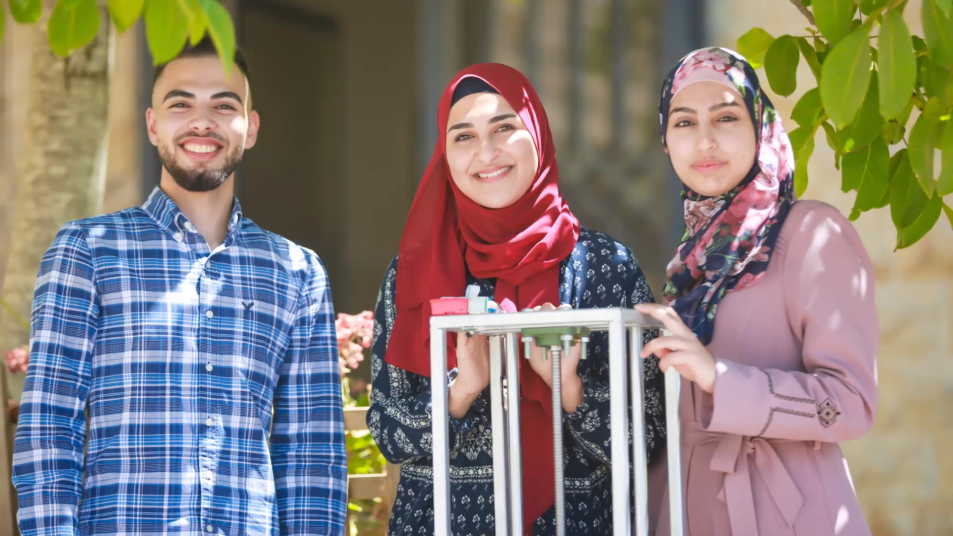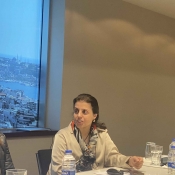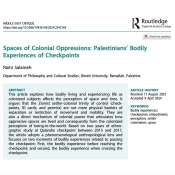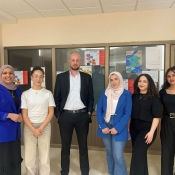Mechanical engineering seniors develop automatic automobile refueling prototype
You’re driving late at night and your fuel light turns on. You pull up to a gas station nearby and tap your credit card on the terminal, and a mechanical arm opens the fuel filler flap, inserts the gas nozzle, fills up the car, and then you’re on your merry way — all in less than five minutes.
While this may sound like the stuff of science fiction, a recent innovation by three mechanical engineering students at Birzeit University is making automatic refueling a reality.
For their graduation project, Abdallah Asaileh, Sabah Mousa, and Abeer Rabee created a prototype of an automatic fuel filling machine that can process payments and fill up (gas-powered) automobiles, all without any human intervention.
The idea for the project, says Mousa, came from observing fuel attendants at local petrol stations in Palestine. “They’re always exposed to harmful emissions and fumes that can seriously damage their health 10 or 20 years down the line, if not sooner,” she explained. “We’ve always wanted to do something that will benefit the broader Palestinian community for our graduation project.”
The group started brainstorming ideas for a device or a machine that can both limit fuel attendants’ exposure to harmful odors while making the refueling process easier and quicker for drivers. As Rabee explains, the machine uses high-definition cameras to locate the fuel latch door and, using a suction cup, opens the door and inserts the nozzle into the gas tank, filling up the amount specified by the driver. The machine then closes the fuel door and retracts to its original position, ready for the next customer.
For the three students, the machine represents much more than just a capstone project. “It’s a culmination of six months of work, yes, but it’s also our attempt at protecting Palestinian workers from harm and facilitating a rather mundane task for many motorists,” said Asaileh, adding that the group will continue to improve on the original design with contributions from engineers and engineering professors at Birzeit University and beyond.
The students’ achievement, however, wasn’t without its challenges. On several occasions, the group wasn’t able to secure parts and equipment essential for the prototype due to COVID-19 travel restrictions. However, with the help and guidance of faculty members at the university, especially project supervisor Dr. Nidal Farhat, an assistant professor of mechanical and mechatronics engineering, the team was able to develop a fully functional model.
A video showing the prototype in action can be viewed below.







